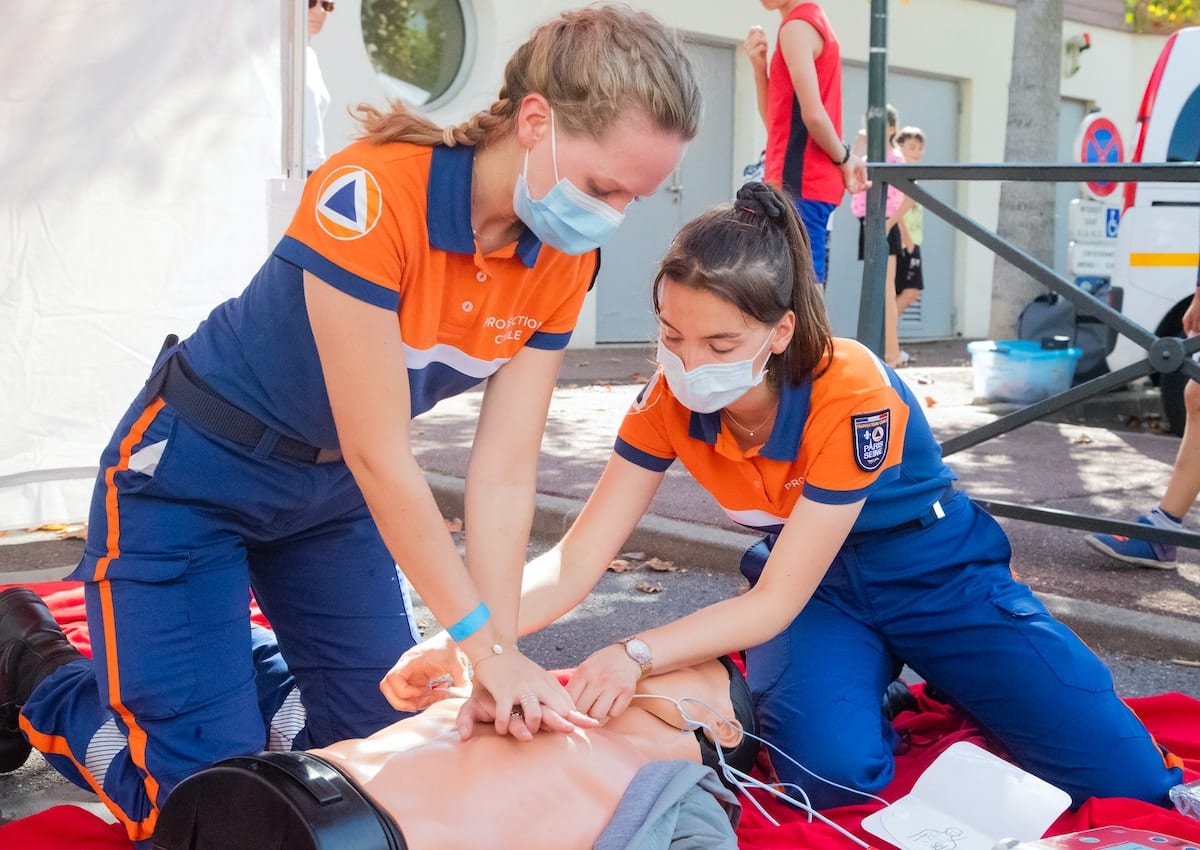Heart attacks are critical medical emergencies that can be life-threatening and affect many individuals annually. Being equipped with the knowledge of immediate first aid procedures can make a crucial difference between life and death in such cases.
This article aims to provide a comprehensive overview of the necessary steps to administer first aid during a heart attack. Additionally, it emphasises the importance of preventive measures for long-term health. It highlights the advantages of enrolling in a first aid course to prepare for potential heart attack situations effectively.
By familiarising oneself with the indicators and symptoms of a heart attack and understanding the immediate actions to be taken, individuals can enhance their preparedness to provide life-saving care when faced with a heart attack scenario.
How Can You Recognise The Symptoms Of A Heart Attack?
The ability to recognise the symptoms of a heart attack is crucial when it comes to providing effective first aid. To know exactly what they are, enroll in a first aid course Tullamarine; for matters like these, it is best not to rely on Google! The primary and most common symptom is intense chest pain that may spread to the jaw, left arm, and back. Sensations of nausea, sweating, and dizziness often accompany this pain.
Other indicators to watch out for include difficulty breathing, shortness of breath, and an irregular heartbeat. In certain cases, individuals may not experience chest pain but instead feel a sensation of pressure or fullness in the chest.
Apart from the physical symptoms, other signs may suggest a heart attack. These can include feelings of anxiety or apprehension, sudden fatigue, and profuse sweating. If conscious, they may explicitly mention chest pain or discomfort.
It is crucial to remember that although these symptoms may indicate a heart attack, they could also be attributed to other medical conditions. Therefore, if you suspect someone is having a heart attack, it is imperative to call for emergency medical services immediately. Prompt recognition and swift action is the key here.
Prevention Is Always Better Than Cure
Maintaining long-term health relies heavily on preventing heart attacks, and individuals can adopt several measures to minimise their risk. One of the biggest steps is to have awareness and the right procedure knowledge about CPR and to learn it from an accredited first aid training provider like the first aid course Dandenong.
A fundamental step is to embrace a healthy lifestyle. This entails consuming a well-balanced diet abundant in fruits and vegetables while restricting saturated fat and cholesterol intake. Regular exercise is also crucial in reducing the likelihood of experiencing a heart attack. Additionally, maintaining a healthy weight and monitoring blood pressure and cholesterol levels are vital in safeguarding heart health.
Another essential aspect of prevention involves ceasing smoking and moderating alcohol consumption. Smoking greatly increases the chances of developing coronary heart disease and contributes to other severe health conditions. Limiting alcohol intake is similarly important in decreasing the risk of heart attack.
Furthermore, it is imperative for individuals to be aware of their family history regarding heart disease and to adhere to recommended screenings. Familiarising oneself with family medical history allows for a better assessment of individual risk factors and facilitates the adoption of appropriate preventive measures. Following recommended screenings aids in the early detection of potential heart issues, enabling timely treatment if needed.
By implementing these preventive measures, individuals can proactively reduce the probability of experiencing a heart attack and maintain optimal long-term health.
Benefits Of Always Being Prepared With First Aid Knowledge
Enrolling in a first aid course offers significant benefits when preparing for heart attacks. By undertaking such training, individuals acquire essential knowledge to identify the signs and symptoms of a heart attack and develop the necessary skills to respond during a cardiac emergency promptly.
Leading experts in first aid, such as those offering the HLTAID011 Provide First Aid course, equip participants with comprehensive instruction on heart attack response. This includes recognising the indicators of a heart attack, performing cardiopulmonary resuscitation (CPR), and effectively using an automated external defibrillator (AED). Additionally, course attendees learn the importance of promptly seeking professional assistance during emergencies and gain insights into providing comfort and reassurance to distressed individuals.
First aid is no less than a superpower; learn it if you have the chance!


